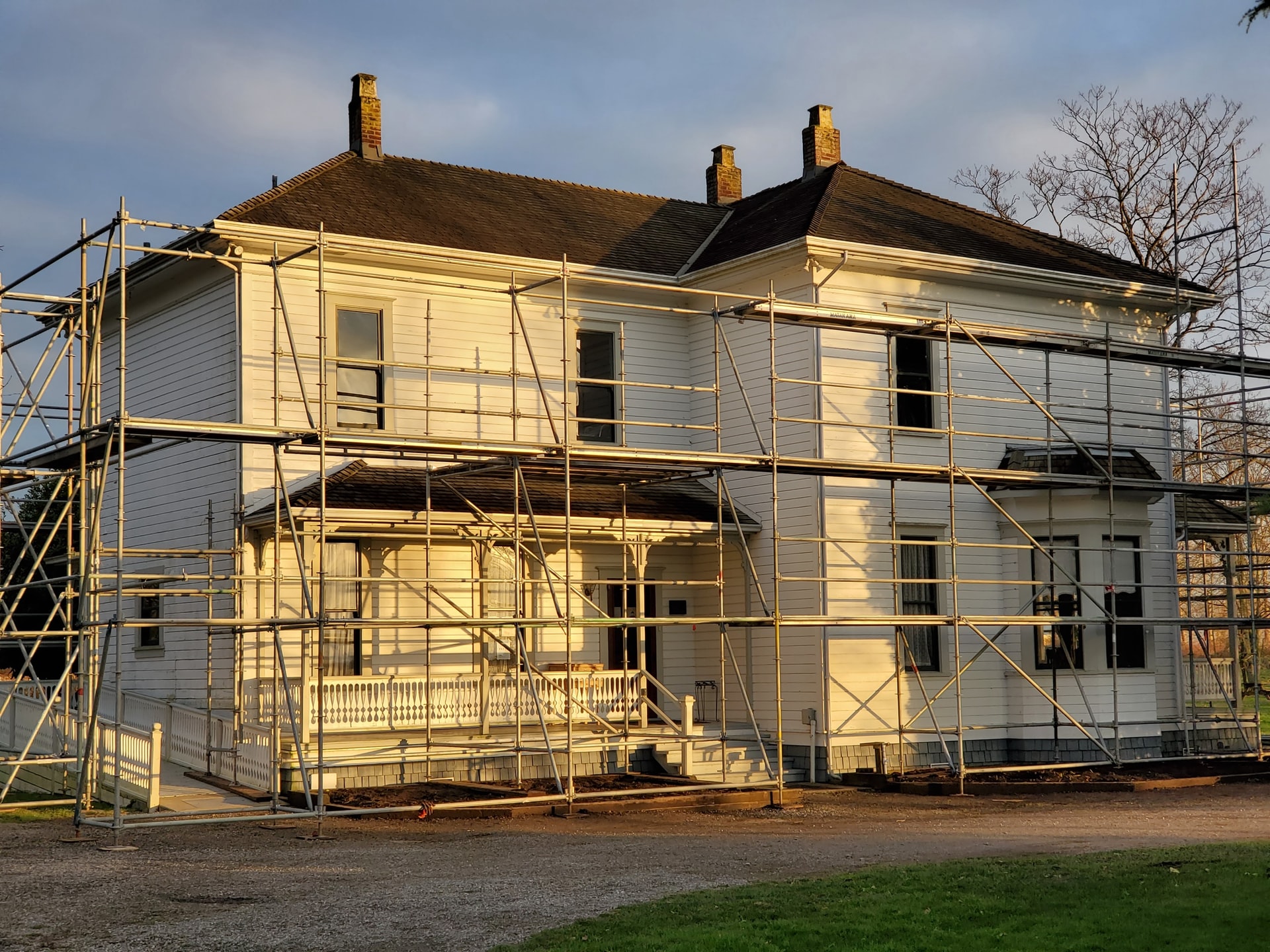Construction project costs add up quickly, and not everyone has enough money to cover the expenses. Whether you want to renovate your home or build a commercial property, you need money to complete the project. Lenders offer construction loans that give you the necessary funds to complete the project. Home construction loans have their perks, but they also have notable pitfalls. We’ll give you the breakdown of construction loans.
What is a Construction Loan?
Contractors and homeowners use construction loans to finance their projects. Borrowers use this specialty loan for home renovations, new projects, and other expenses. Lenders assume more risk with construction loans than traditional loans. This can make it challenging to qualify and obtain funds from a construction loan. Nevertheless, people seek out these loans because they need the money.
How Do Construction Loans Work?
Construction loans are short-term loans that you don’t have to pay right away. Initially, you’ll only have to keep up with interest, giving homeowners and contractors more cash flow flexibility. You will still owe the loan’s total amount at the end of the term, but you get some time to finish the project and generate a return on the property. Some borrowers convert construction loans into mortgages after the project’s completion.
Borrowers must provide construction plans and a timeline before receiving financing, but that’s where the complications start instead of stopping. Lenders delay principal payouts and wait for you to achieve milestones. The bank’s inspectors and appraisers will review the construction to ensure sufficient progress and assess the current valuation. You will only receive your next allotment if the inspectors and appraisers like what they see.
What Do Construction Loans Cover?
Construction loans cover several expenses and can help you gain momentum on your project. A construction loan can address the following costs.
Land Cost
Some construction companies need help with financing land before building the property. A construction loan covers this expense and other costs the contractor will incur. Borrowers seeking a house renovation won’t have to worry about land costs.
Architectural Plans
You’ll have to hire an expert to plan your project. An architect can craft a realistic blueprint for your project to ensure functionality, but their fees vary. A construction loan can cover these expenses, so you don’t have to worry about a lack of funds.
Labor
You will need to hire skilled workers to complete the project. Construction can get dangerous and lead to injuries, especially if you don’t know what you are doing. Workers review the blueprint and move the project forward. This area can represent a large amount of your budget, and adequate financing can fill the gap.
Construction Materials
A home renovation requires several materials that impact the cost of building a project or renovation. Depending on the project, you may need steel, vinyl, tiles, concrete, and other materials. Skilled workers need these construction materials to complete the project. However, a tight budget may tempt you to cut corners and lead to structural flaws. A construction loan covers these costs, but they’re not the only financing option.
Permits
Homeowners can’t renovate on a whim. They must first get approval from their city or county. The construction project must fall within predetermined parameters before you can get a permit. Construction permits won’t take up the bulk of your budget, but you’ll need them to work on the project.
Closing Costs
You’ll have to pay closing costs before getting the construction loan. Unfortunately, lenders use the project’s post-construction valuation when deciding closing costs. A higher property valuation leads to higher closing costs. Luckily, closing costs qualify for expenses you can cover with a construction loan.
Contingency Costs
Lenders will request a realistic budget before giving you a loan. Despite your best efforts, you may exceed your budget. You may underestimate expenses or be surprised by inflation. Lenders use contingency costs to cover incidents like these. These contingency costs increase your total bill but provide you with more flexibility in the event of an unpleasant surprise. Your construction loan’s principal can cover contingency costs.
Typical Requirements for a Construction Loan
Lenders have several requirements for construction loans. These loans are riskier for banks, and they have a few barriers to entry.
Credit Score
Your credit score helps lenders learn about your ability to manage debt. A higher credit score indicates stronger debt management skills. Most lenders will expect a 680 credit score or higher, but you shouldn’t aim for the minimum. Raising your credit score will help you qualify for more financing and lower interest rates.
Income
Lenders will review your income to make sure you can pay back the loan. Their income requirements depend on how much money you want to borrow. A higher loan amount requires more income.
Debt-to-income ratio (DTI)
Lenders know a construction loan isn’t your only obligation. Homeowners may also have a mortgage, auto loan, and other forms of financing. Each debt makes it more difficult to pay additional loans. Lenders use the debt-to-income metric to determine if you can pay the loan. The DTI ratio compares your income to your debts. For example, if you earn $10,000 per month and pay $3,000 in debt each month, your DTI ratio is 30%. Most lenders will prefer a debt-to-income ratio below 45% during the approval process.
Down Payment
A down payment reduces your monthly payments. Reducing these payments makes the loan more manageable and minimizes the lender’s risk. Since construction loans are riskier assets, lenders may request a 20% down payment for the loan.
Construction Plan
Lenders want to see if you are serious about the construction. A plan lets them see your vision and the end goal for the construction. If you default, the lender will take the land and partially constructed project as collateral. Lenders would prefer to avoid this scenario, and a robust construction plan makes them more confident in your ability to finish.
Why Construction Loans are Not Always Recommended
Construction loans provide you with extra funds when other loans may not provide adequate capital. However, these loans come with several downsides that make them unattractive to homeowners and contractors. We have outlined some of their disadvantages below.
- Short-term with Higher Interest: Construction loans have shorter terms, giving you less time to pay the principal. Higher interest rates make it even more challenging to make a dent in the principal. This combination can financially strain many homeowners and contractors and cause more trouble than they’re worth. Homeowners who refinance will end up with a higher interest rate.
- Complex Process: You don’t get access to the funds right away. Lenders will give you small portions of the loan based on milestones. The lender will send an inspector and appraiser to make sure you’re on the right track before giving you additional money from your loan.
- Usually Paid Out in Stages: Not getting your money right away will slow down the project. Most loans give you all cash upfront, but construction loans don’t follow this common pattern. You should review the draw schedule to see if it’s reasonable for your objectives.
- Need to Pay Interest for Each Stage: It may take a while before homeowners and contractors generate revenue from their constructions. Despite this obstacle, you owe interest payments on each construction phase. You won’t have to pay the principal right away, but you’ll still owe all of it at the end of the term.
- Frequent Project Inspections: Homeowners may not have the patience for many inspectors to review every detail of their renovation. Contractors may get frustrated as people continue showing up and delaying construction progress. You can’t do too much about frequent property inspections if you get a construction loan.







